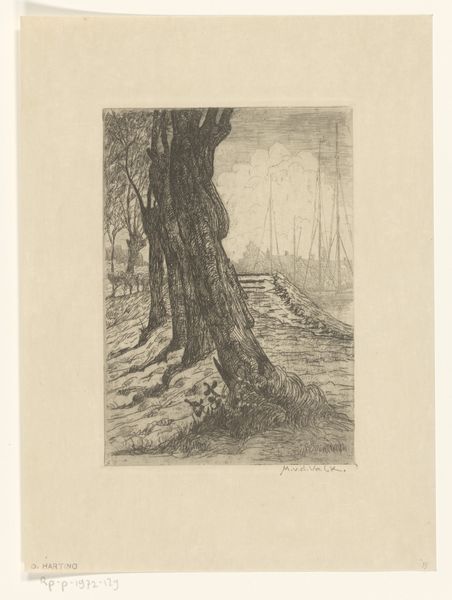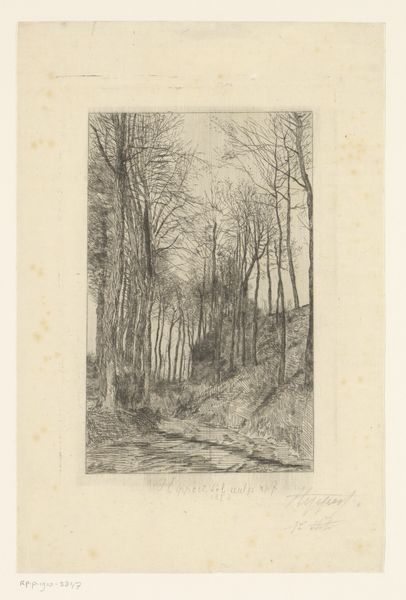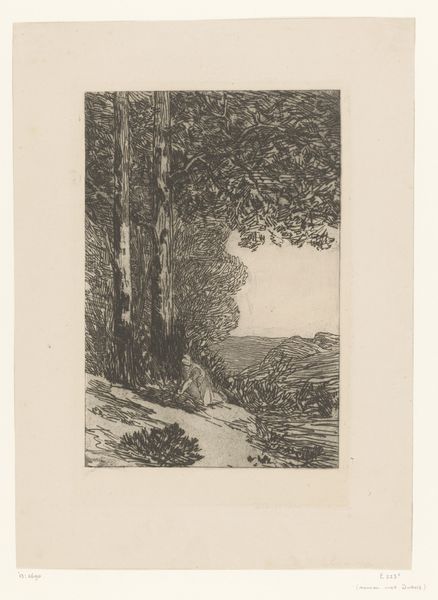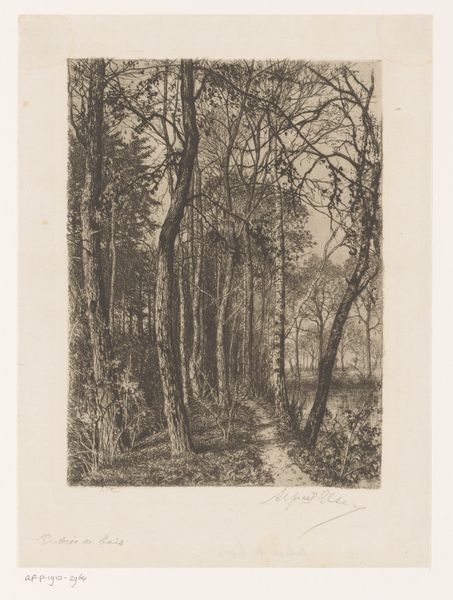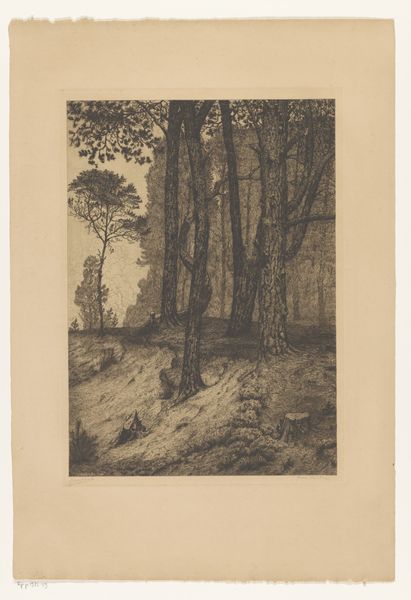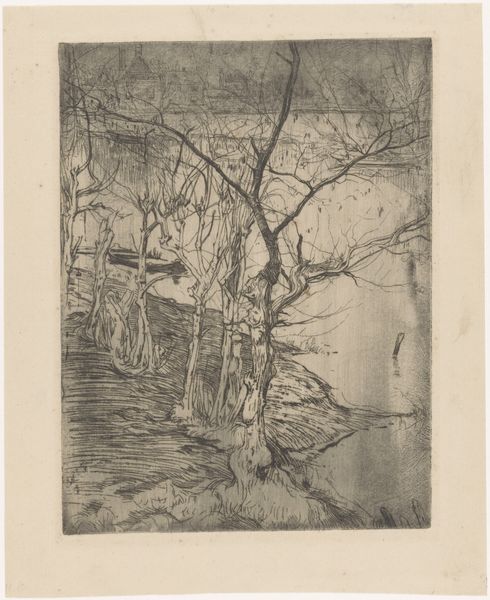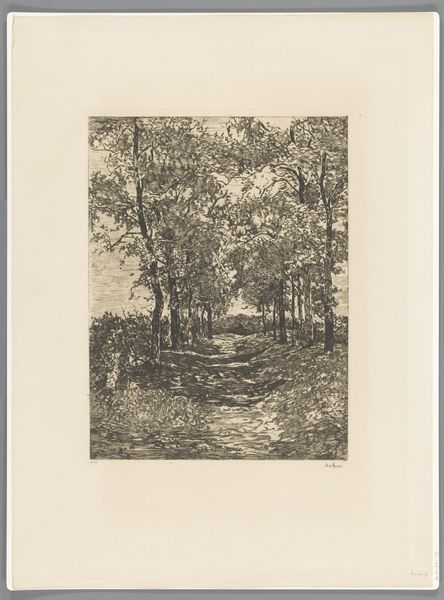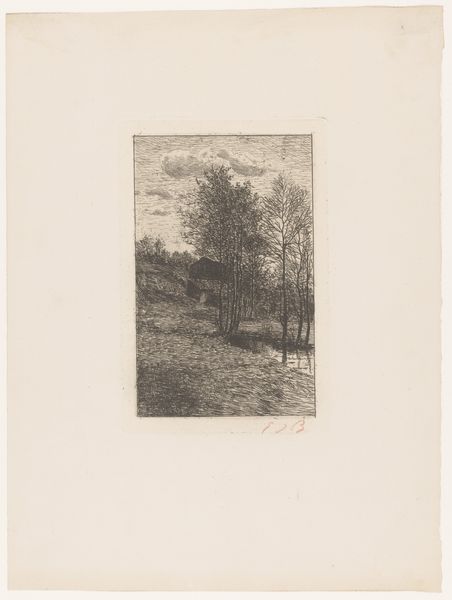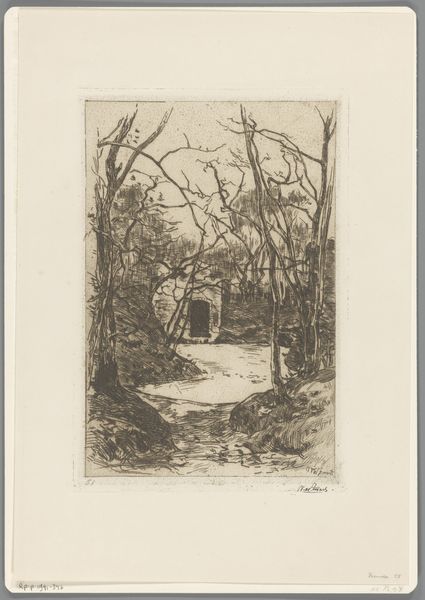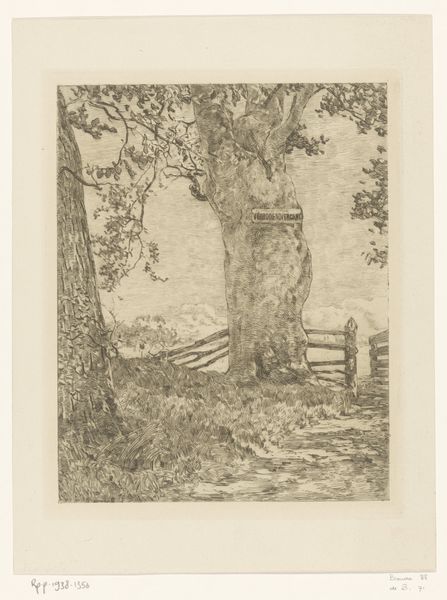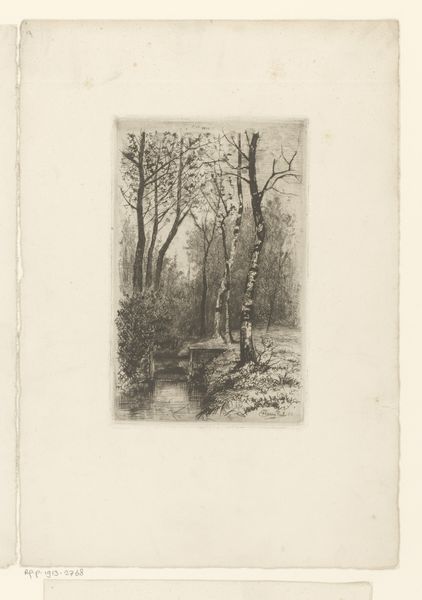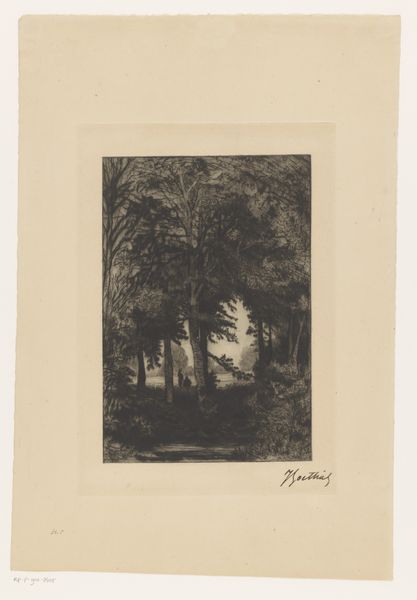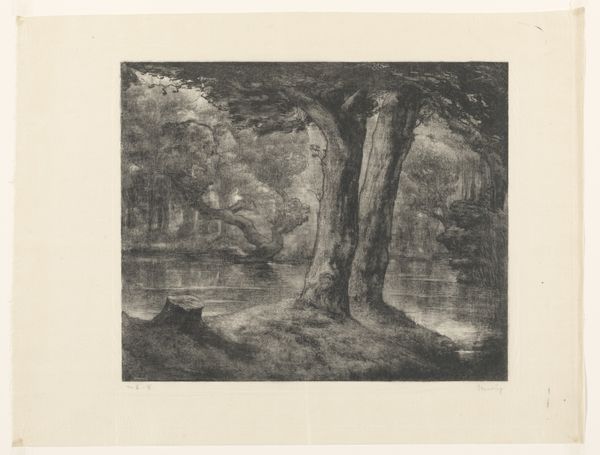
drawing, print, etching, paper
#
drawing
#
natural shape and form
#
natural tone
#
ink paper printed
# print
#
organic shape
#
etching
#
pencil sketch
#
landscape
#
paper
#
form
#
line
#
tonal art
#
realism
Dimensions: height 300 mm, width 263 mm
Copyright: Rijks Museum: Open Domain
Curator: This etching, made by Franciscus van Gelder between 1886 and 1935, depicts a courtyard scene. It's titled "Binnenplaats met bomen, waterpomp en kippen," or "Courtyard with trees, water pump and chickens". Editor: It’s incredibly atmospheric! The tonal gradations create this hazy, almost dreamlike quality. You can practically feel the dampness in the air, and sense the deep quiet of this forgotten, overgrown place. Curator: Yes, and if you look closely, the etching captures a very specific material reality. See how the ink is embedded in the paper? That's a conscious choice reflecting van Gelder's understanding of printmaking techniques to achieve a certain textural effect, giving the appearance of layered foliage. It moves beyond simple representation. Editor: The chickens interest me, and their placement. Notice they're at the bottom right, and partially obscured. To me, the chicken can signify simple domesticity or the soul; van Gelder chooses the humbleness of the barnyard fowl to anchor this quiet courtyard in lived, quotidian experience. Curator: I’d say that that approach speaks to his interest in the tradition of the etching process. Notice also how the lines of the stonework meet those of the trunks—he’s showing us the material links of how our habitations can harmonize and draw inspiration from the surrounding, untamed natural world. Editor: And the water pump? Surely there's more to it than mere functionality. The pump symbolizes life-giving forces. In conjunction with the foliage—it hints at a secret garden, a sacred space almost entirely reclaimed by nature. Curator: Right. He challenges us to examine our ideas of what art is through accessible scenes of common manual labor. With subjects like the water pump, chickens and stonework in a rural environment, it allows him to push back on conventional aristocratic art and imagery. Editor: Ultimately, the visual tension is resolved when these archetypes commune on equal footing in the artist’s capable rendering of reality. We find beauty in the mundane by embracing a narrative greater than any single object contained within. Curator: This detailed look, especially considering its materials, reveals so much about Franciscus van Gelder’s connection to both landscape and craft. It really enhances our understanding of the piece. Editor: And for me, it enhances my own experience. It allows me to sink further into my contemplation of a simple place imbued with lasting symbolic significance.
Comments
No comments
Be the first to comment and join the conversation on the ultimate creative platform.
